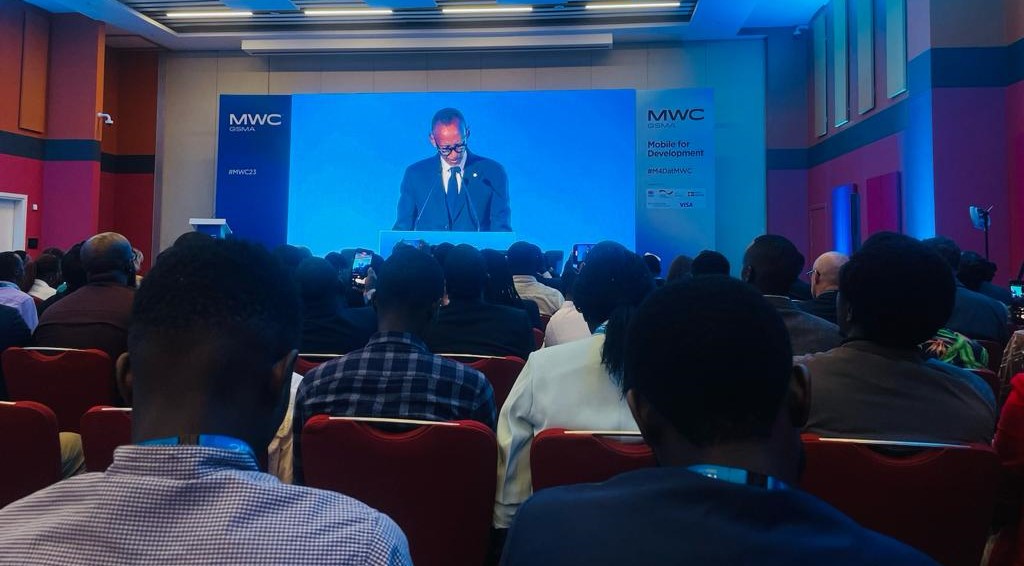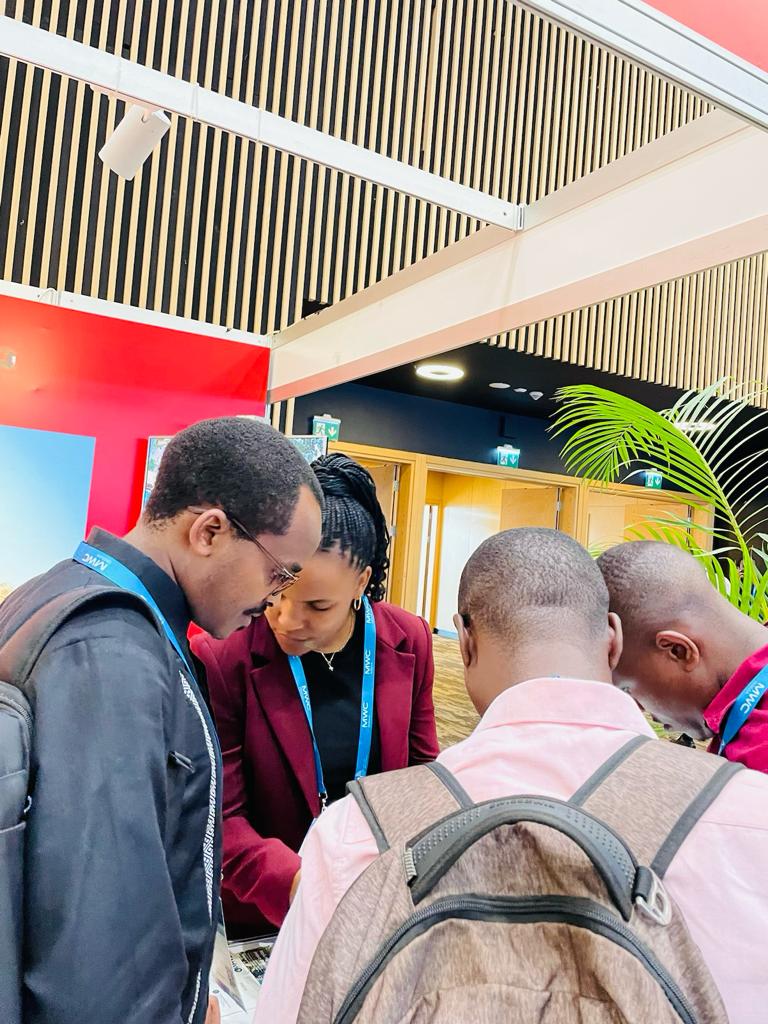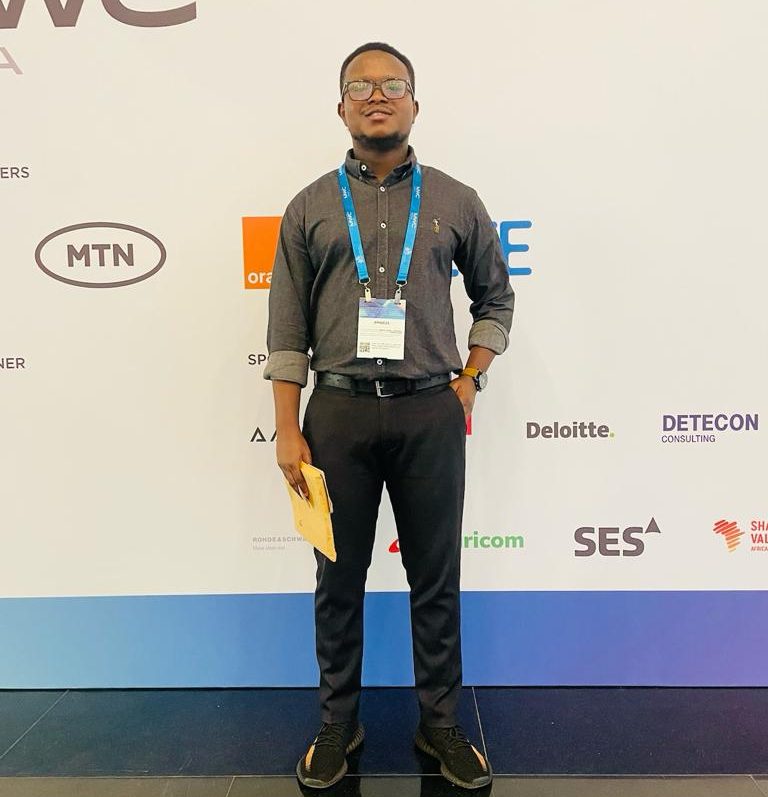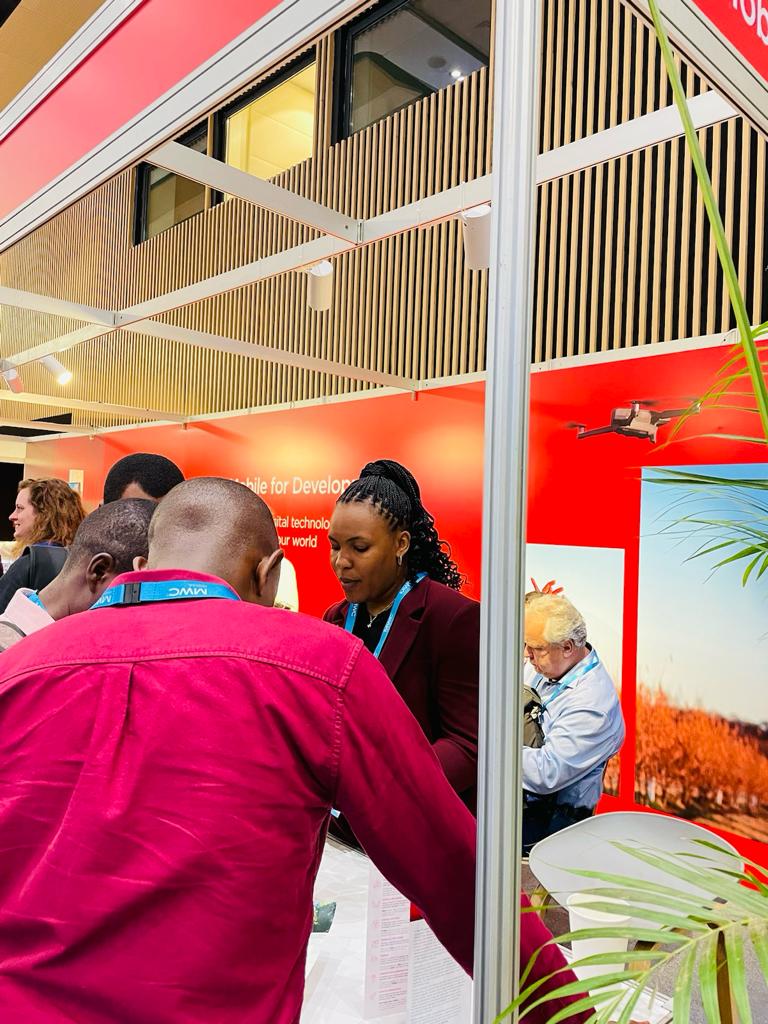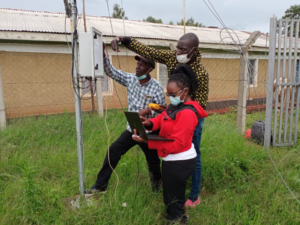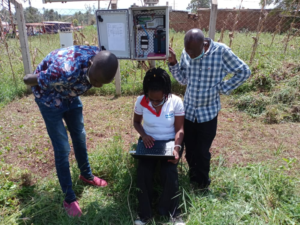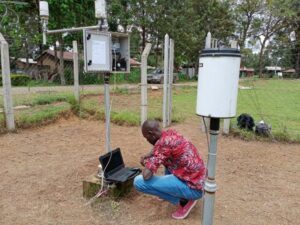Author: Victor Eseme Omoit
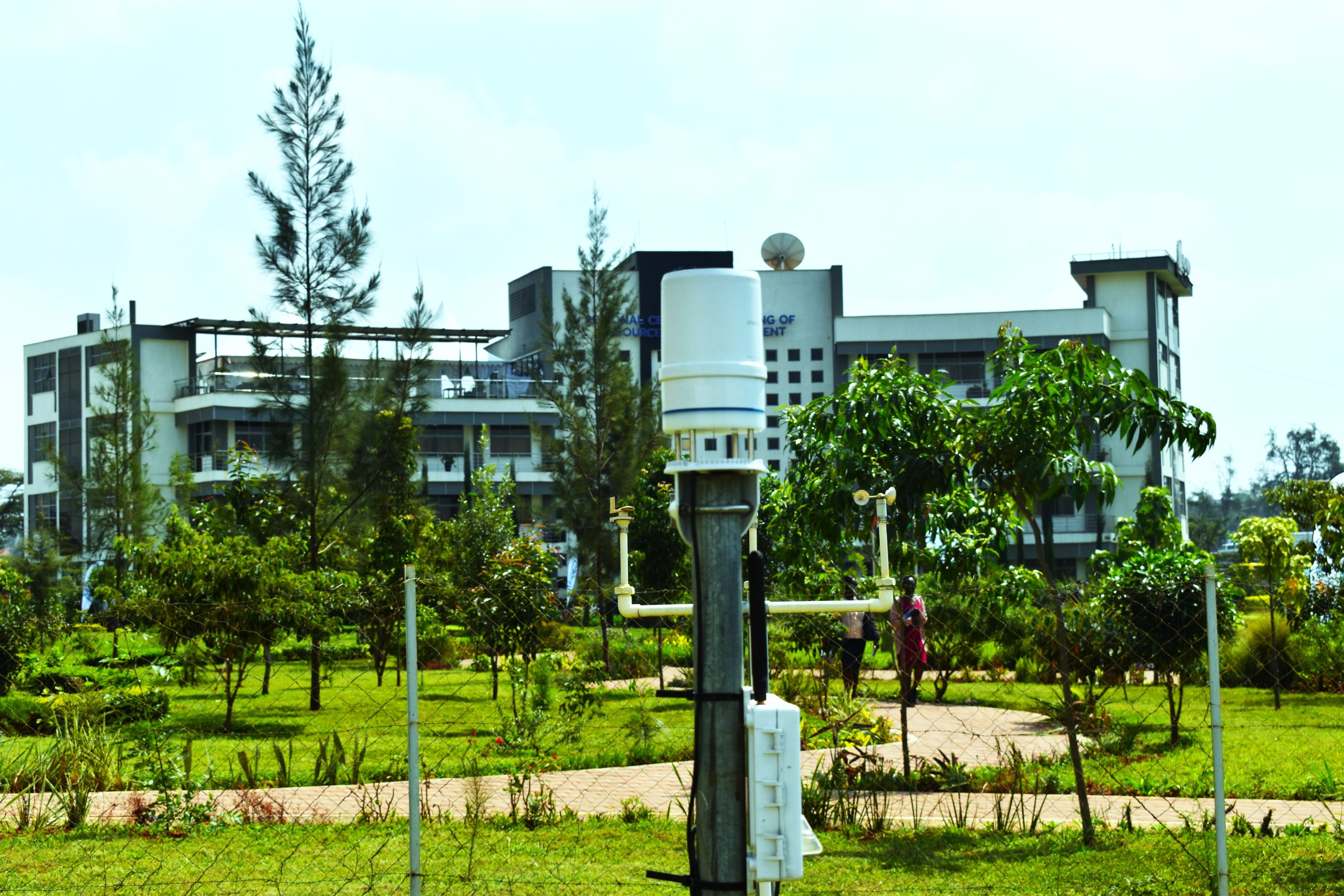
As we edge closer to COP29 in Baku, Azerbaijan, this year, discussions about earth observation and its role in sustainable development are growing louder. At the heart of these conversations was the RCMRD International Conference (RIC) 2024, themed Earth, Our Only Home. With experts from various fields coming together, the focus was not just on technology, but on how it can drive real-world impact, especially in addressing Africa’s environmental and developmental challenges.
Coming off the high of celebrating TAHMO’s 10th anniversary this past June, I was motivated to join the RCMRD International Conference (RIC) 2024, energized by the endless possibilities for TAHMO’s next decade. As TAHMO’s country coordinator for Kenya, I am well aware of our mission to build a dense network of weather stations across sub-Saharan Africa and how this has contributed to improving climate data collection, particularly in rural and remote areas where there are significant weather data gaps. This data is crucial for weather forecasting, agricultural planning, and managing water resources, which directly impact livelihoods and climate adaptation efforts across the African continent.
At TAHMO, we champion innovation and collaboration, and attending RIC2024 felt like another step forward on our journey. With a decade of success behind us, I felt an urgency to explore new opportunities that will strengthen the foundation for TAHMO’s next phase of impact. This conference couldn’t have come at a better time, aligning seamlessly with our shared mission of leveraging data to confront Africa’s most pressing climate and environmental challenges.
One of the key issues raised during the conference was the need to customize data formats to suit different regions. At the moment, much of the data generated is region-specific, which limits access for those outside the operational zones. This raises the question: How can we extend the reach of this data so that other regions can also benefit? By allowing broader access, data can be used to simulate and analyze different environmental and agricultural scenarios, potentially driving innovation across the continent.
A significant merger highlighted during the conference is the coming together of Opesa and BIOPAMA under the Regional Centre of Excellence for Eastern and Southern Africa (RCoE-ESA). This initiative aims to ensure that Africa’s forests, biodiversity, and coastal landscapes are managed sustainably. Their focus areas include Information Management, Scientific Support, Capacity Building, and Global Engagement.
Earth, our only home.
As of 2022 the world’s population stood at 7.9 billion people, along with diverse wildlife, forests, and countless natural resources, making it very sensitive to disruptions. However, what have we done with it? In recent decades, we’ve witnessed widespread destruction, pushing the Earth in a dangerous direction. If this continues, it will become increasingly difficult, if not impossible, to reverse the damage.
At this conference, I met several conservationists from the Mara region, where TAHMO installed 17 new Weather stations earlier this year, adding to the existing eight. It was encouraging to see their dedication to learning how best to care for our planet. The fact that people traveled from far and wide to gain insights and discuss the next best course of action is a clear sign that we can no longer afford to delay. The urgency to protect the Earth is stronger than ever.
The coming together of organizations such as RCMRD, RCoE-ESA, GEOGLAM, JECAM, TAHMO, the Uganda Meteorological Authority (UNMA), the Kenyan government and many more to discuss how best to save our world is a clear indication that Earth truly is our only home.
Shifting from Technology to Action
In his opening remarks, Dr. Emmanuel Nkurunziza, RCMRD’s Director General, emphasized that the focus should not only be on technology itself but on what it can do for people. “The idea is not to sit in offices and be pleased with what we are doing, but to focus on what people can do with the technology we provide,” he remarked, highlighting the importance of human-centered solutions.
Mrs. Dorcas Okalany, a member of the RCMRD governing council, reiterated this by urging collective responsibility. She pointed out that accurate and timely data is crucial for achieving several Sustainable Development Goals (SDGs), particularly Climate Action, Life on Land, and Sustainable Cities. She also stressed the urgency of decisive action, noting, “The time to act is now.” With Africa’s population growing rapidly, adaptation and innovation will be key to securing a sustainable future.
Dr. Rachel Nyamai, Member of Parliament for Kitui South, made an observation regarding the recent floods that affected Kenya. She emphasized that the timing of the conference couldn’t have been better, as sustained innovation is crucial for managing Africa’s resources. In her speech, she stressed the importance of open data and data sharing in building resilience, particularly in the face of climate disasters. Nyamai’s remarks underscored how better access to earth observation data can assist in forecasting and mitigating future events like the floods, making a compelling case for continued investment in technological infrastructure.
Judith Nalule Nabakooba, Uganda’s Minister of Land, echoed these sentiments, delivering greetings from President Museveni. She emphasized the importance of prioritizing sustainability in every aspect of life. “Our planet, with its abundant resources, is not only our home but also our responsibility,” she stated, calling for bolder actions and collaboration to safeguard the earth for future generations.
Data Access and Infrastructure Challenges
During the plenary session, Charles Mwangi from the Kenya Space Agency, a long-time friend and collaborator of TAHMO, participated as a panelist. Our partnership with Mwangi dates back to the RCMRD Space Challenges, where students leverage weather data for competitions. A significant part of the discussion centered on the challenges Africa faces in effectively utilizing technology for earth observation. One of the key barriers highlighted was the continent’s limited capacity to generate and store its own data. For example, downloading satellite imagery can take hours due to unreliable internet connections and frequent power outages. These infrastructural challenges hinder Africa’s ability to fully leverage technology and close existing gaps. “It’s more about where we want to see Africa go,” Mwangi remarked, emphasizing that governments need to actively invest in technology and infrastructure to support faster data access and use.
Engaging Africa’s Youth in Earth Observation
Between sessions, entertainment by RCMRD students offered a powerful reminder of the potential of youth, while also insisting on the responsibility we all share in preserving the earth. One of the songs they presented “isikuti yahuma Ango”, a traditional Luhya song from western Kenya- brought smiles to the faces of the audience, showing a deep appreciation for the students’ diverse talents and pride in the work being done to guide and mentor the next generation as they prepare to shape the future. The anticipation for what lies ahead was evident in the faces of the audience.
One of the most pressing topics raised during the conference was the role of young people in driving earth observation initiatives. Many panelists pointed out that there’s often a disconnect between the problems facing Africa and the solutions being proposed. Programs like mapathons, hackathons, and boot camps were suggested as ways to bridge this gap and engage the youth in meaningful, problem-solving activities.
When it comes to agriculture, an often overlooked sector by young people, the discussion shifted towards making it more appealing. With organizations like GEOGLAM insisting on integrating data with policy, there are growing opportunities for youth to engage in agriculture through technology and innovation. As farmers are not scientists, bridging the gap with tech-savvy youth can lead to a more dynamic agricultural sector.
Looking Ahead
As Africa continues to develop its earth observation capabilities, the focus remains on how to better integrate data into actionable insights. From addressing food security to managing natural resources, collaboration across borders, institutions, and generations will be key to ensuring that Africa’s rich biodiversity and ecosystems are preserved for future generations.
As we gear up for COP29, the message from RIC2024 is clear: Earth is our only home. For TAHMO, this is a reminder of our critical role in building climate resilience across Africa. The future holds immense promise, and I couldn’t be more excited for the journey ahead.



